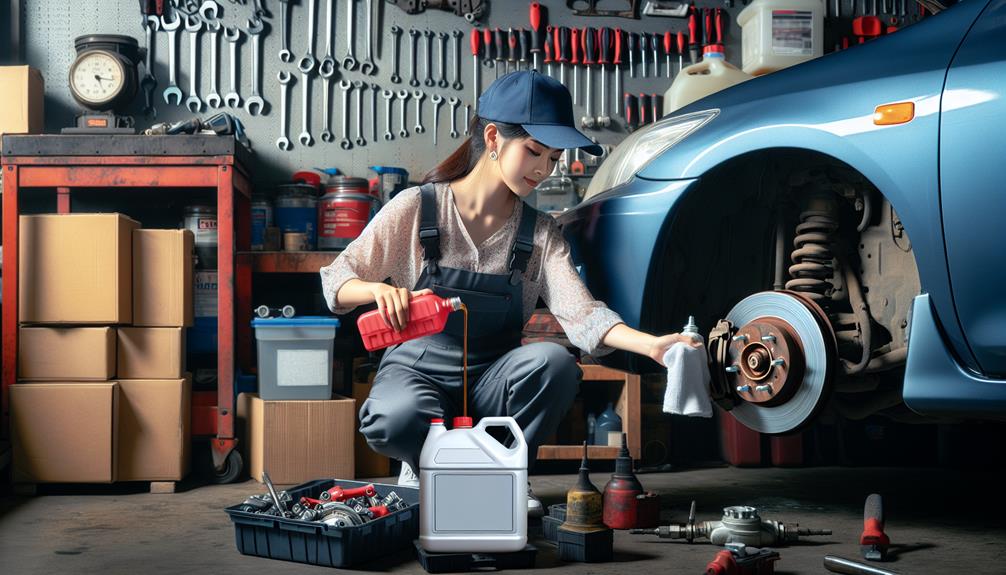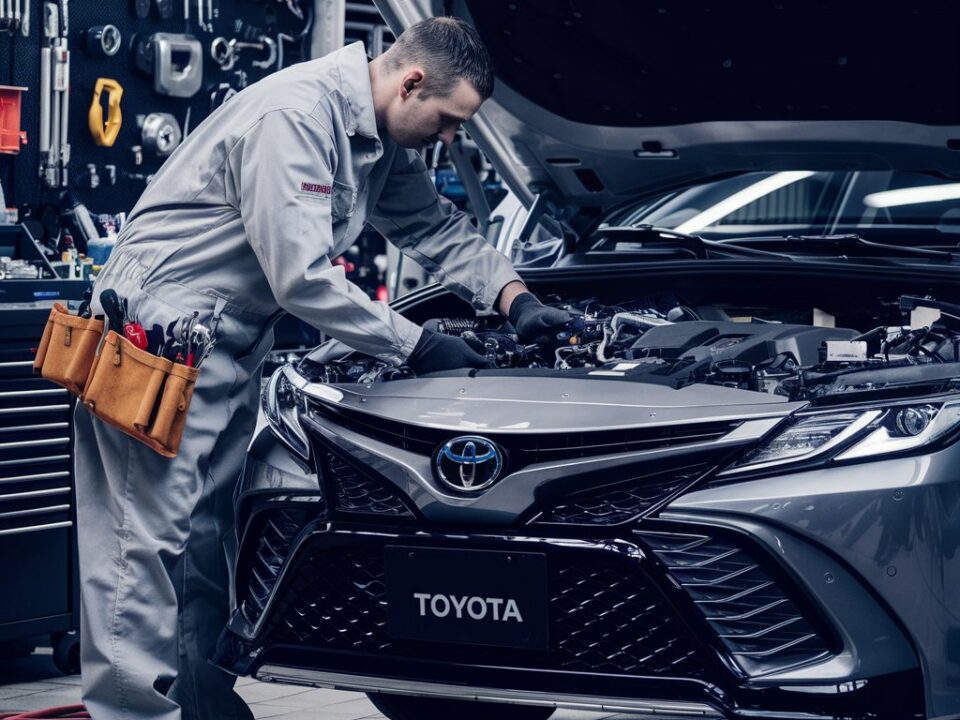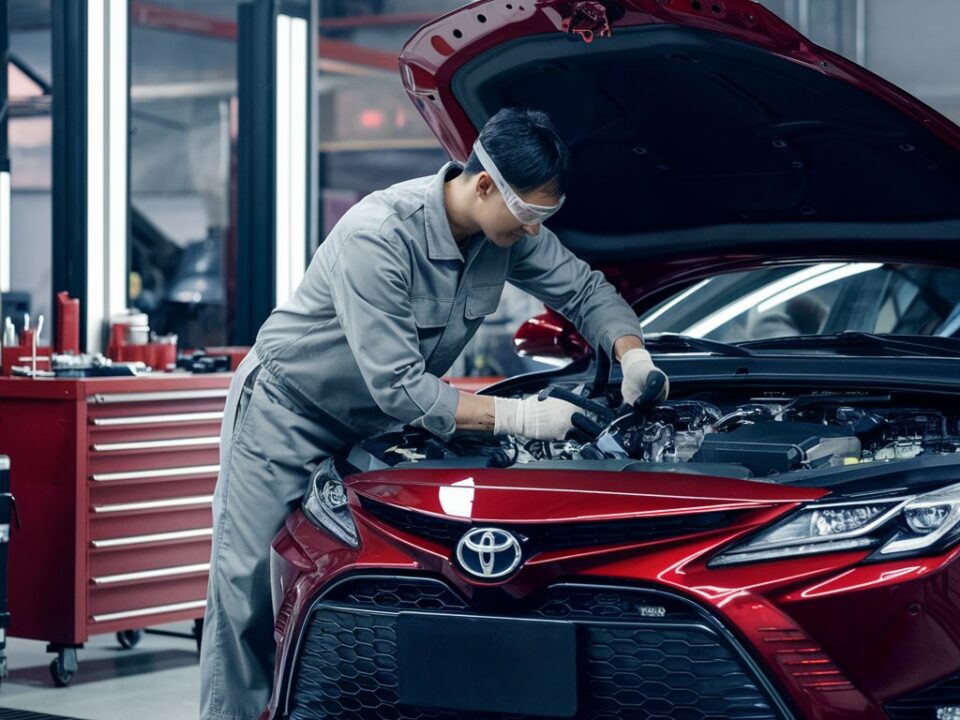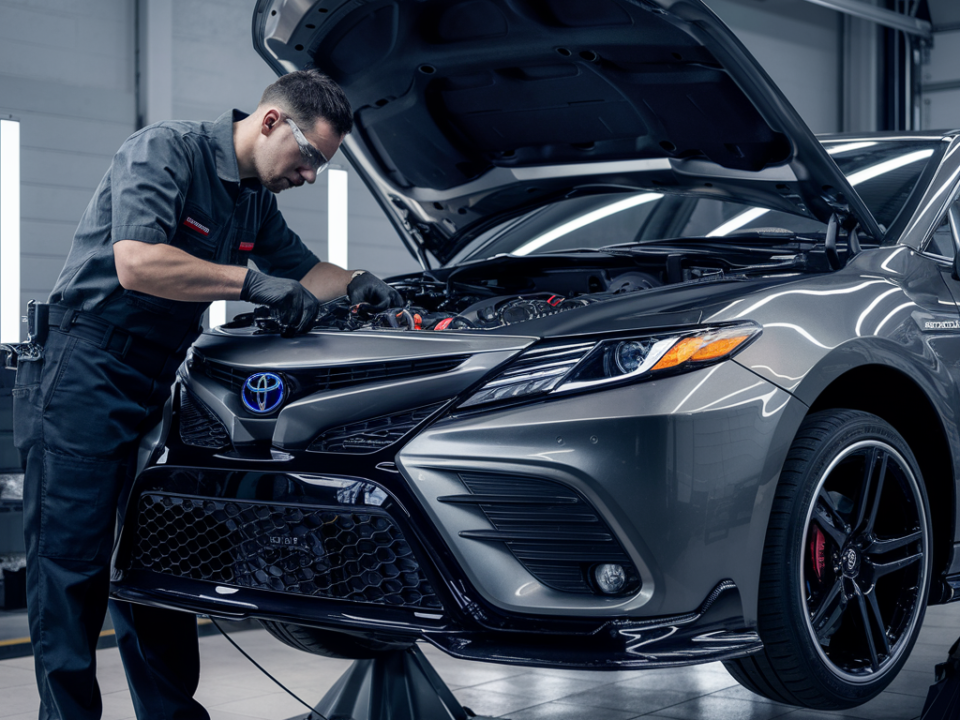
Step-by-Step Guide to Resurfacing Brake Rotors on Your Toyota
July 3, 2024
Troubleshooting ABS Issues in Toyota Vehicles: A Mechanic’s Guide
July 3, 2024Understanding the optimal timing and rationale for performing a brake fluid flush on your Toyota is crucial for maintaining its safety and efficiency. Toyota mechanic manufacturers generally recommend a brake fluid flush every two years or 30,000 miles, whichever comes first. This procedure is vital because brake fluid inherently absorbs moisture over time, which can lead teo a lower boiling point and reduced effectiveness. This hydroscopic characteristic can compromise the fluid’s ability to perform under high temperatures, potentially resulting in brake failure. By flushing the old fluid and contaminants from the system, you not only extend the life of brake components but also enhance your vehicle’s safety. To grasp the full scope of benefits from regular brake fluid maintenance, one must consider the technical aspects of hydraulic brake systems.
Identifying the Need for a Flush
Recognizing when your Toyota requires a brake fluid flush is crucial for maintaining optimal braking performance and safety. For Toyota owners, understanding the symptoms and signs that indicate a flush is needed can prevent costly repairs and ensure your vehicle remains a reliable part of your community’s driving culture.
Primarily, the color of the brake fluid can be a significant indicator. Fresh brake fluid should have a light, clear amber color. Over time, it can become dark due to the accumulation of moisture and debris, which compromises its effectiveness. If the fluid in your Toyota has turned dark or cloudy, it’s time to consider a flush.
Another telltale sign is the feel of the brake pedal. If you notice a spongy or soft brake pedal, this could indicate that air has entered the lines, mixing with the fluid, which can occur if the fluid is degraded and unable to prevent moisture intrusion effectively.
Moreover, pay attention to any unusual sounds when braking, like grinding or squeaking, which might suggest that the protective qualities of the brake fluid have diminished.
Regular inspections by a professional can also help identify less obvious issues, ensuring that every member of the Toyota family stays safe on the road.
Benefits of Regular Fluid Maintenance
Understanding the signs that your Toyota needs a brake fluid flush provides a perfect segue into exploring the benefits of regular fluid maintenance. Consistent maintenance not only extends the lifespan of your vehicle’s hydraulic system but also ensures its optimal performance under various driving conditions.
Regularly replacing the brake fluid, which hygroscopically absorbs moisture over time, prevents the deterioration of internal components. Moisture in the fluid can lead to corrosion in the brake lines, calipers, the master cylinder, and other components. This can compromise the system’s integrity and efficiency, potentially resulting in longer stopping distances or brake failure.
Furthermore, fresh brake fluid maintains the right boiling point necessary to avoid vapor lock and brake fade during intense use, such as in heavy traffic or on steep inclines. This is particularly critical for those who rely on their Toyota for daily commuting or for those in areas with variable climate conditions.
For the Toyota community, adhering to a regular maintenance schedule is a shared commitment to safety and reliability. By taking proactive steps in fluid maintenance, you ensure that your vehicle remains a dependable part of your life, reinforcing a sense of belonging among fellow Toyota enthusiasts who prioritize care and precision in their vehicle maintenance routines.
The importance of routine brake fluid flushes for Toyota mechanic cannot be overstated.
Considering the critical role of brake fluid in maintaining effective braking performance and vehicle safety, is it not prudent to invest in regular maintenance?
Ensuring the timely replacement of contaminated fluid not only enhances the reliability and longevity of the braking system but also upholds the highest standards of road safety.
Regular flushes are a small investment in the broader context of vehicle maintenance and safety assurance.
Next article Prev article



